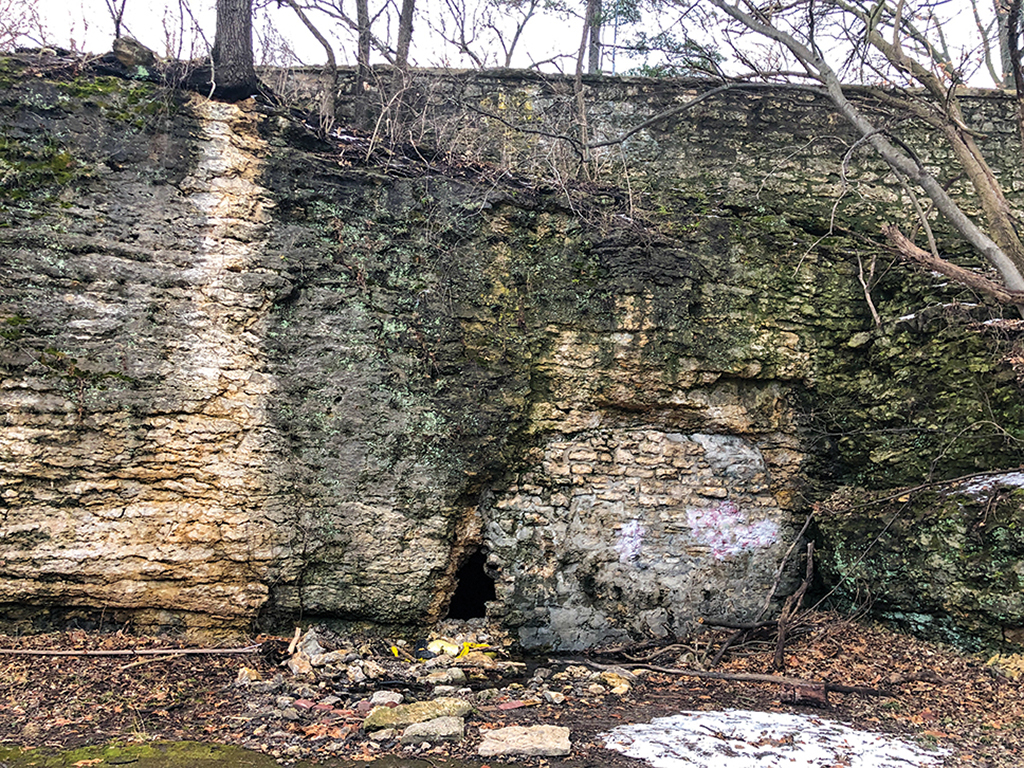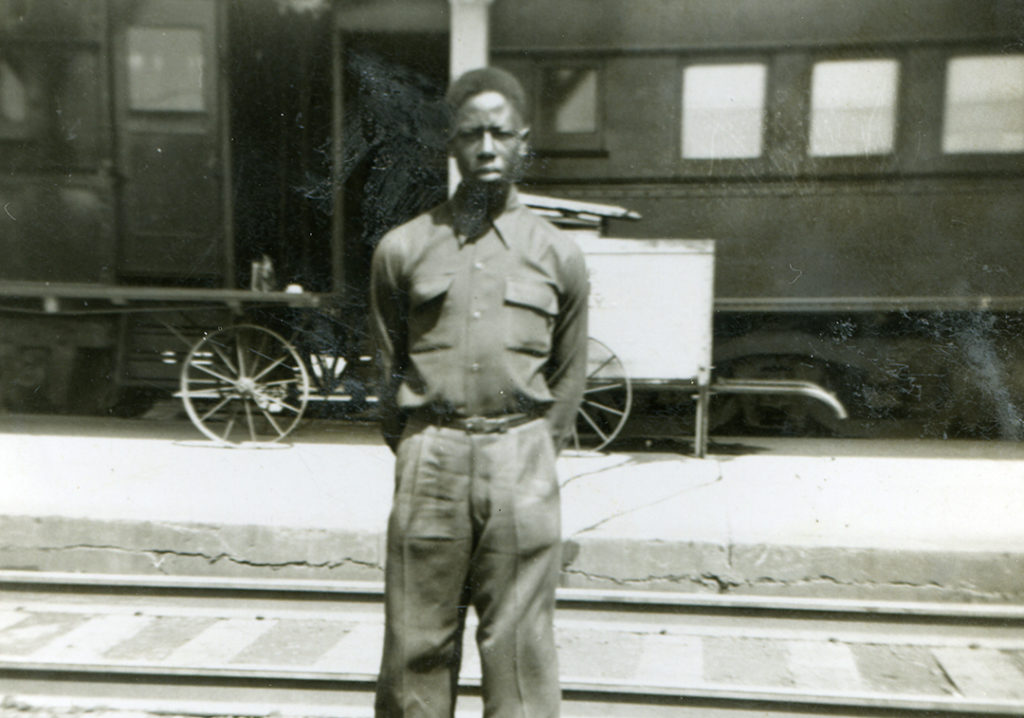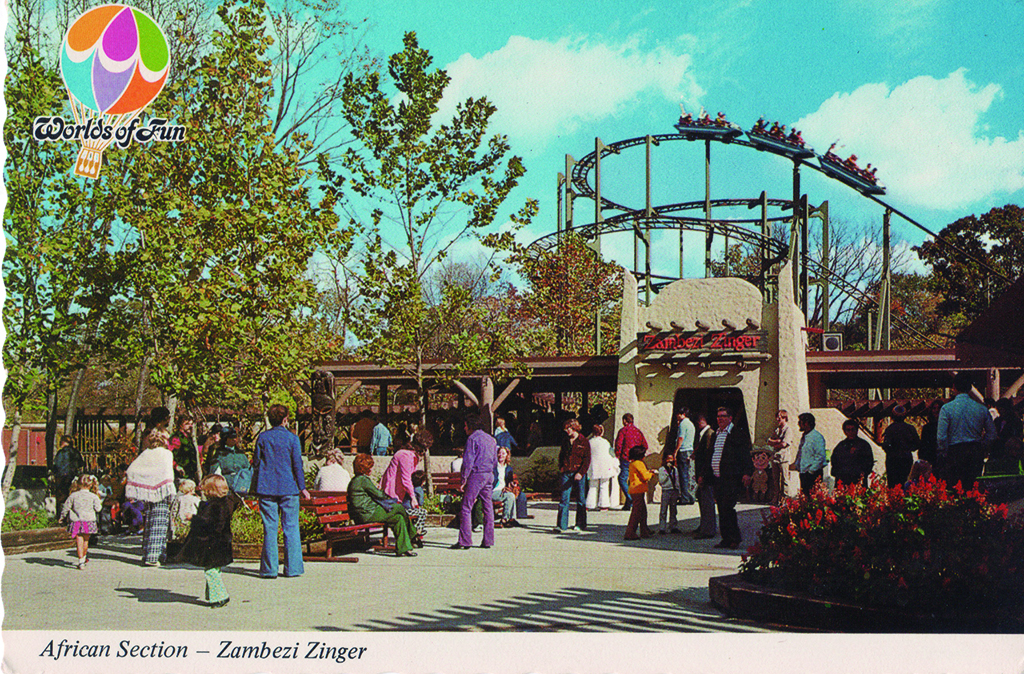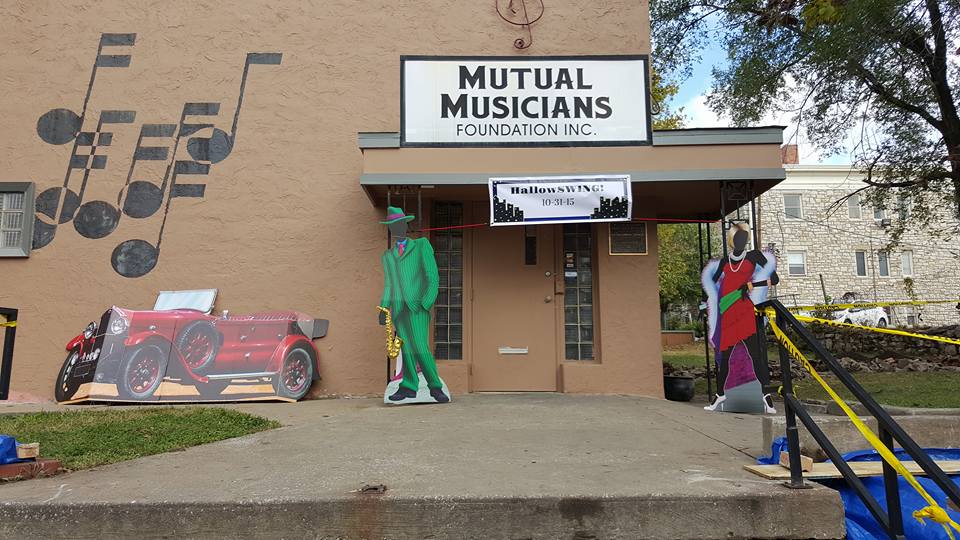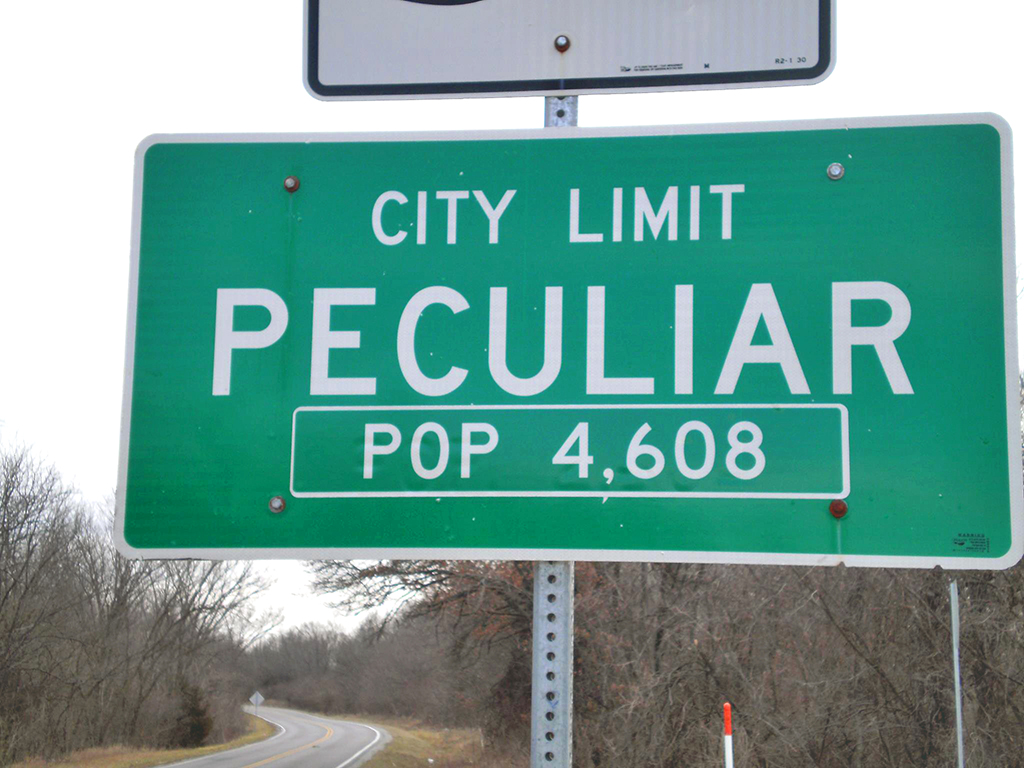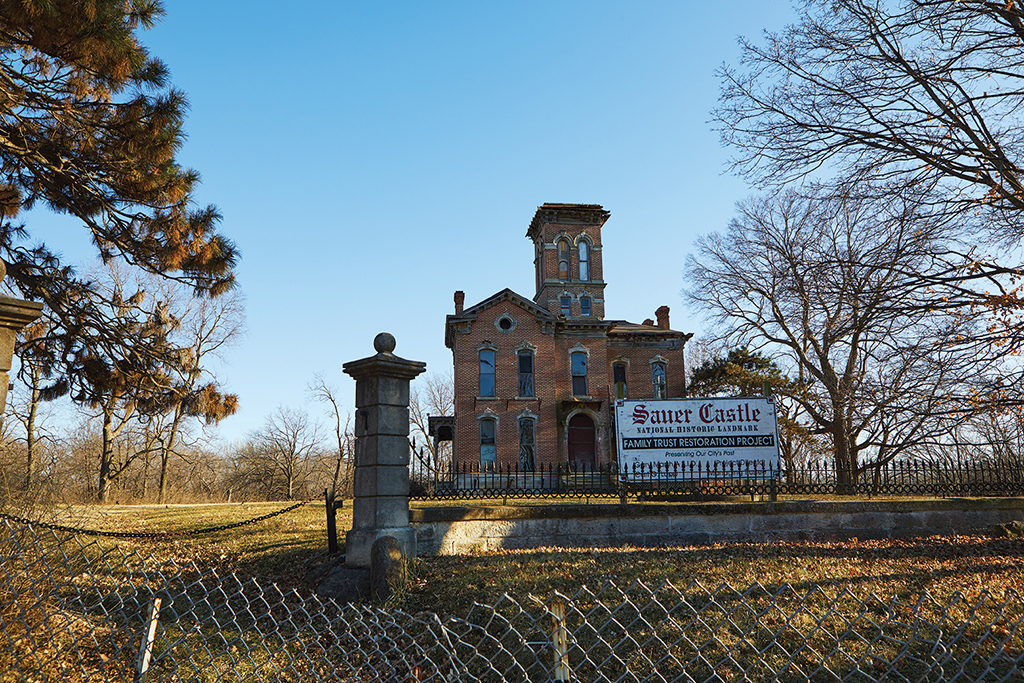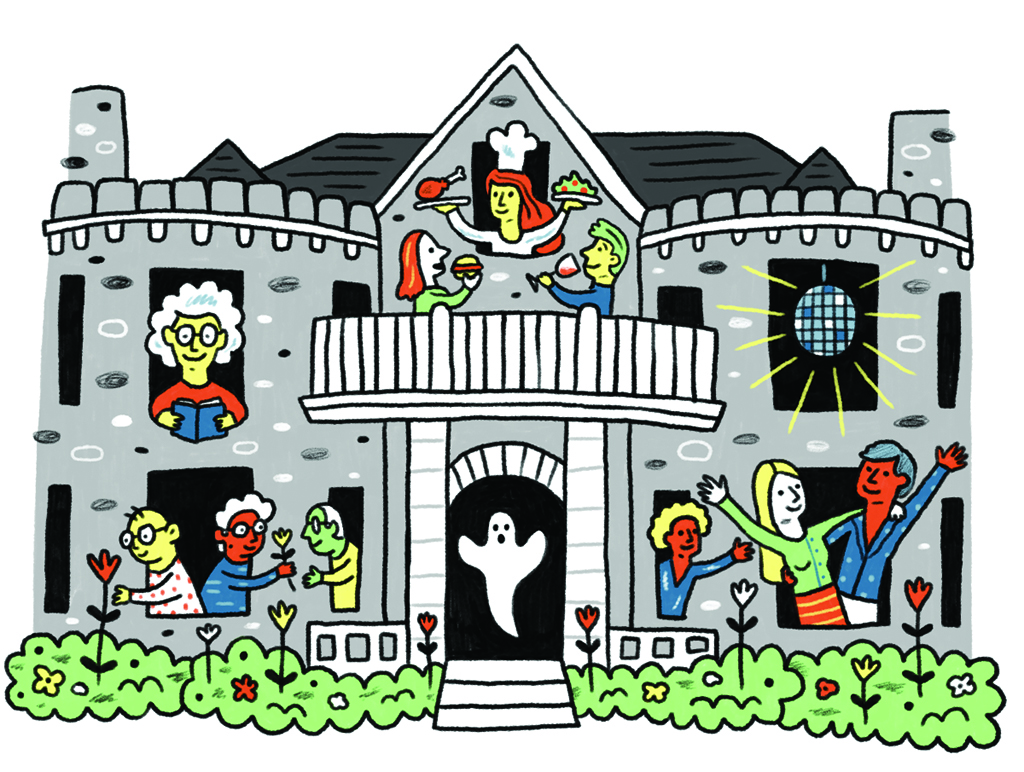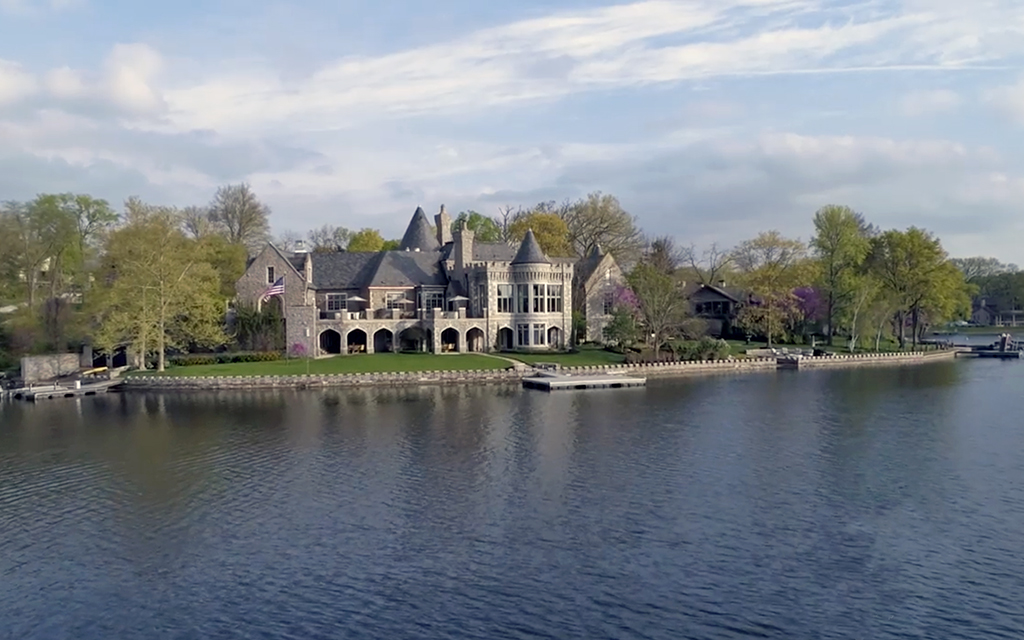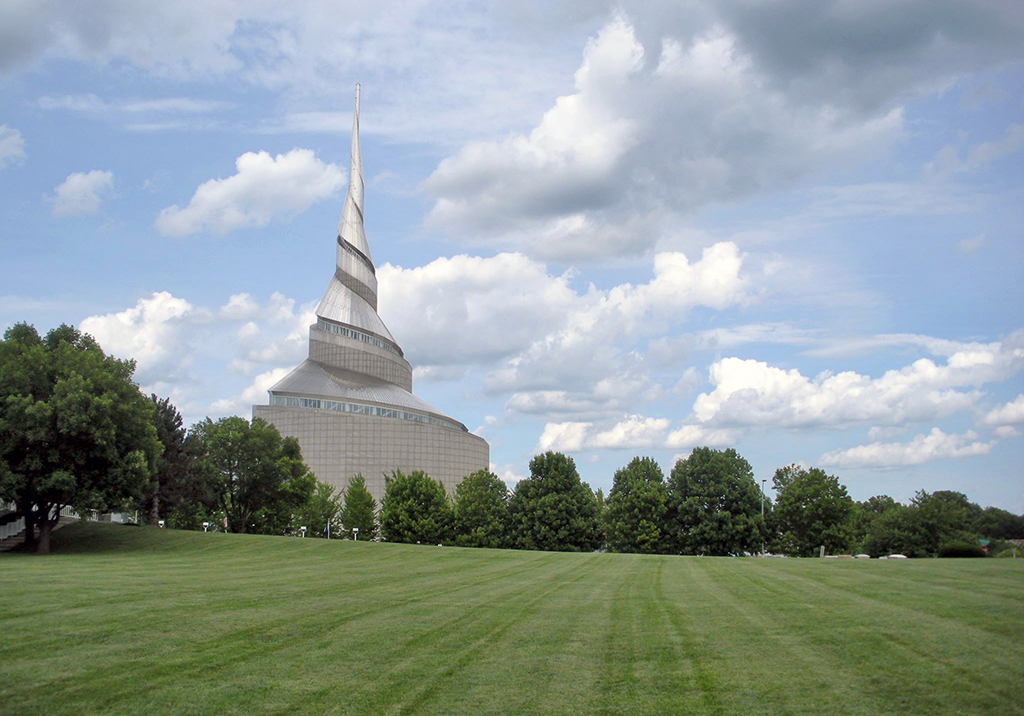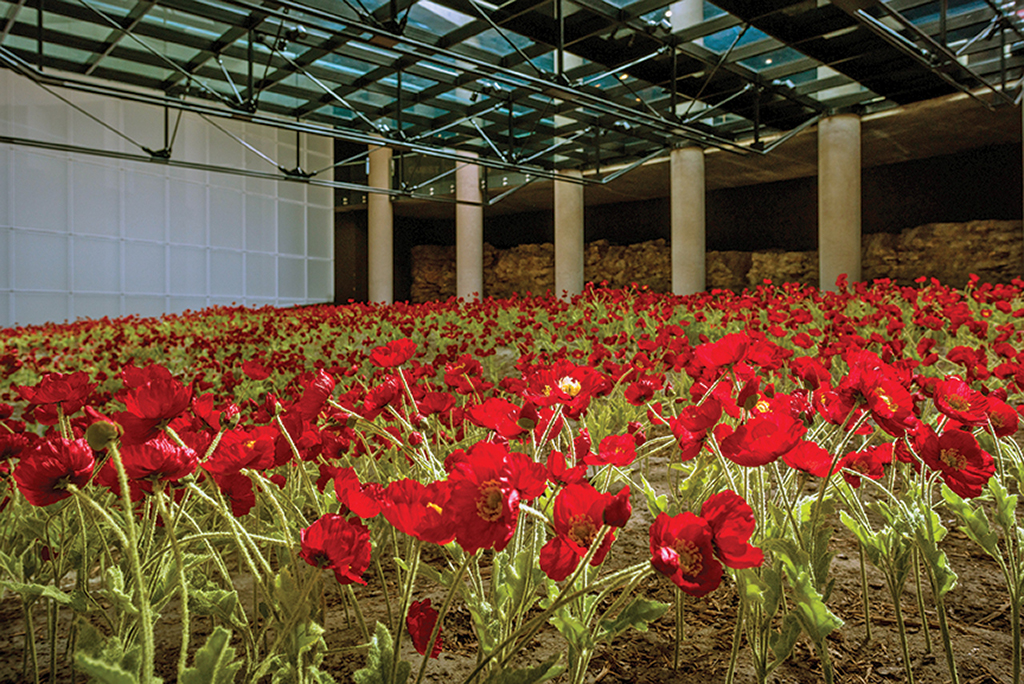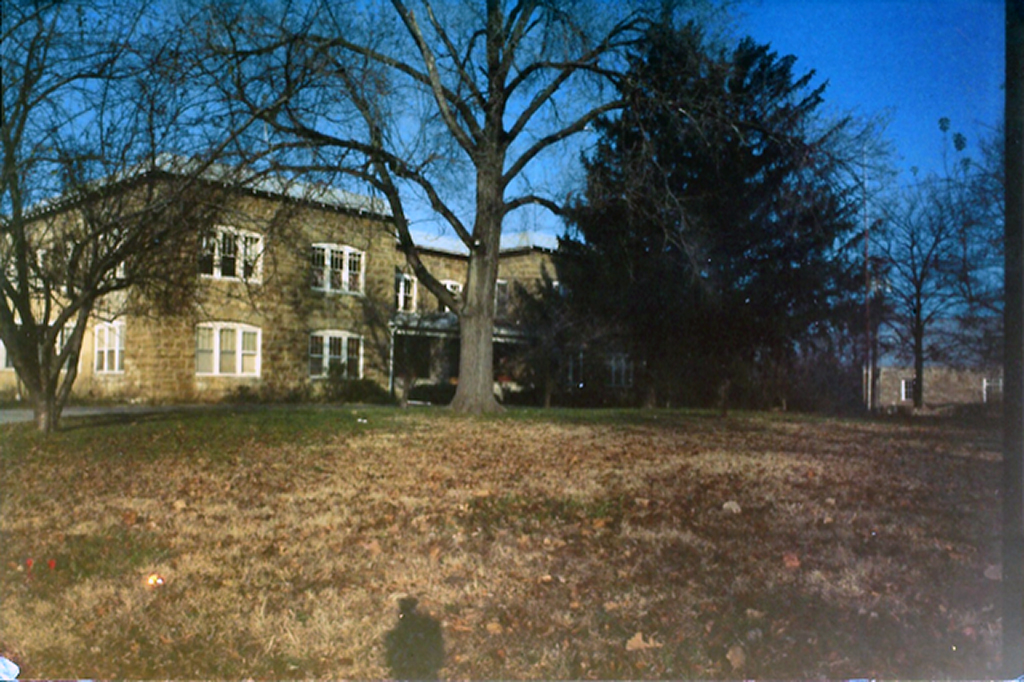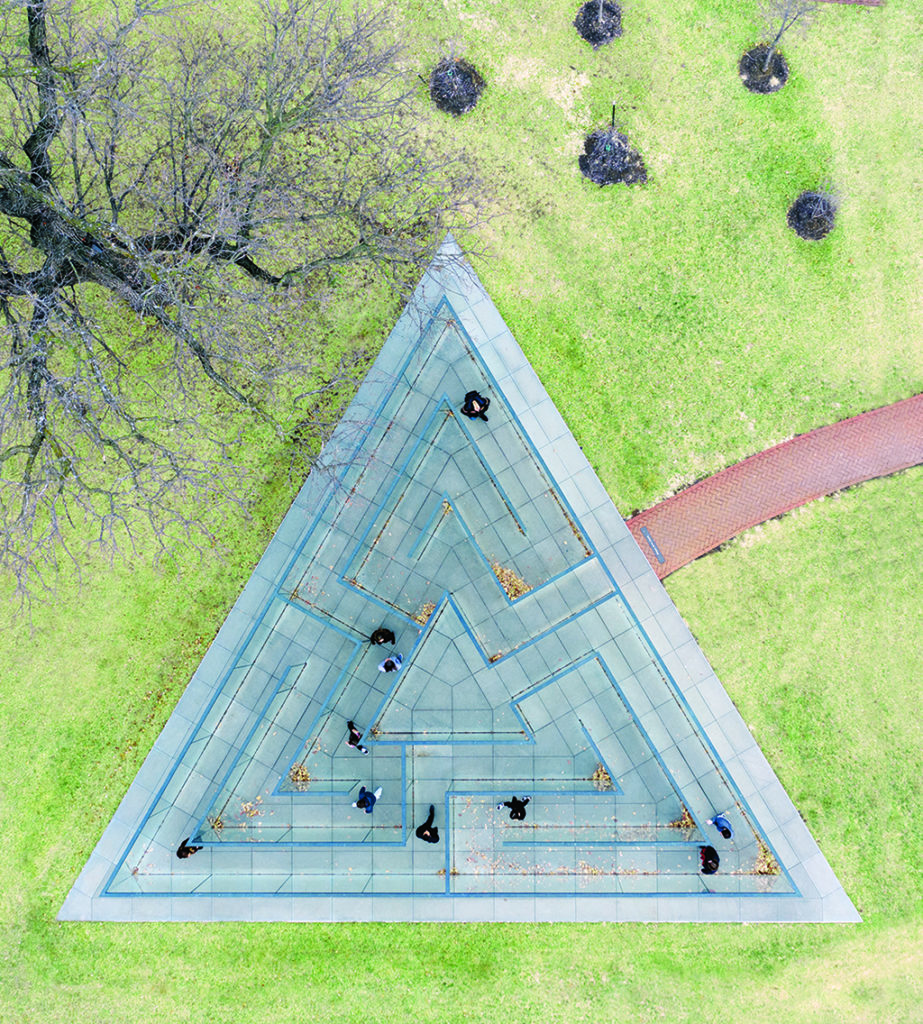Think you’ve been everywhere and seen everything in Kansas City?
You haven’t, we promise. Chances are, you’ve only been scratching the surface.
Here are 43 secrets of Kansas City, from the haunting truth behind a canceled play at a local high school to a little-known shop selling returned Amazon products for pennies.
Some of these items are hidden gems, others are local urban legends of widely varying degrees of truth. All are worth knowing about if you love Kansas City.
Photography by Caleb Condit, Rebecca Norden, Zach Bauman, Jeremey Theron Kirby and Samantha Levi. Illustrations by Allison Kerek Williams.
1. One of Kansas City’s best-loved parks is home to a secret cave
No one knows why the cave in Roanoke Park was walled off—or why, after decades, it opened last month. Myths surround the cave, as they do with many of Missouri’s caverns. People claim the outlaw Jesse James hid there on the run, that the bones of cattle rustlers are buried there or that schoolchildren went missing in its bowels. The cave was resealed sometime in the 1980s for liability reasons, according to longtime parks department employee Dave Stark, who was actually a part of the crew that sealed it.
One cold January day this year, something or someone opened the entrance to the cave embedded into a limestone bluff across an old brick road from the park’s community center. A man-sized hole was left open. Warm air from inside the earth poured steam out into the icy air.
Some urban explorers took the opportunity to make their way inside the cave, which is flooded with chilly water and definitely not a safe place to be.
Kayla DeBlois posted about “spelunking in Roanoke park” on Facebook, calling it “the coolest thing I’ve ever been able to be a part of.” She said the cave was filled with water “about knee deep” at the edges and ”chest deep” at the deepest, with caved-in passages and lots of mud.
“You could see how high the water level has been at one point because of how high the mud went up,” she tells Kansas City. “We didn’t have any shovels or anything to dig any farther through the mud or we would have.”
The city’s parks department has “minimal information” on the cave but says it will be resealed as soon as practicable. “The cave was not reopened by us and will be reclosed as soon as weather permits,” says parks spokesperson Heidi Markle.
Jim Cooley of the Missouri Speleological Society lives in the neighborhood and suspects a vandal broke in.
“We hear rumors in coffee houses and from people who hear from people who really want to get into that cave,” he says. “People hear I’m a caver so they say ‘Did you know we have a cave in the neighborhood?’ And of course I do. I hope it stays bricked up because I’m quite sure there’s not much there.”
Cooley will suggest to the city that “a small group of cavers who know how to survey caves to go in there and make a map” before it’s resealed.
“I think it’s small, cruddy, dirty muddy passages and it doesn’t go very far,” he says, and that even if the cave does go as far as old legends suggest, it was probably damaged by the constriction of the city and the sewer system.
It’s an opportunity for education, he says, if the city decides to replace the stone wall with horizontal iron bars that allow bats to come and go.
“What I will suggest they do is build a bat-friendly cave gate and use the cave in the park as an opportunity for education on bats,” he says. “If people are to appreciate these natural resources that we have here we need to make it accessible to them—a boarded off cave doesn’t do that, a gated off cave would.” -Madalyn Gerant
2. Secret squirrels at Loose Park
Near the rose garden at Kansas City’s beautiful Jacob L. Loose Park, you’ll find an art deco-style pavilion. Step inside that pavilion, look up, and you’ll see park director Judy Penner’s favorite detail: The light fixtures on the pavilion are very detailed, depicting squirrels, acorns and oak leaves. -Madalyn Gerant

3. City Hall has an amazing rooftop observation deck
You may know that Kansas City has the second tallest city hall in the nation, a twenty-nine story skyscraper dwarfed only by Philadelphia’s city building. You probably don’t know that you can enjoy a view from the top.
Yes, KCMO’s city hall features an observation deck on the roof with amazing views of the city as it stretches off to the horizon.
The downtown KCMO deck is free to visit and open from nine in the morning to three in the afternoon, weather permitting. To take a tour on a clear, warm day, bring your ID card down to the security desk in the basement. Hope to get Captain Joseph Isham, head of security, as your guide. Isham often gives tours himself, putting his vast knowledge of the landmarks dotting the skyline to good use.
He’ll also regale you with stories about the old cigar bar in the building’s lobby, the man who proposed to his girlfriend atop the building and the workings of the hawk that lives above the observation deck. -Martin Cizmar
4. The Tonganoxie Split is a tornado buster?
Kansas City and its immediate suburbs have historically been lucky when it comes to avoiding tornadoes. Severe storm cells often move in from the west, seemingly headed straight for the heart of the city, until they get to the small town of Tonganoxie, Kansas. There, almost as if by divine intervention, storm systems diverge to the north.
Various mystical and topographical explanations have been proposed for the phenomenon, including an incantation in the nineteenth century by Chief Tonganoxie of Delaware, large hills like Burnett’s Mound in Topeka, bodies of water and highways. However, in 2000, a tornado hit the small Leavenworth County town of Tonganoxie and caused massive damage.
Meteorologist Jared Leighton with the National Weather Service explained that there’s no scientific truth to the old myth of a Tonganoxie Split that protects the city.
“It’s kind of dangerous to think of it as a split,” Leighton says. “We really want people to understand that you’re not any less likely to get hit by a tornado just because of where you live.”
So although a tornado has yet to hit Kansas City’s urban core, it seems that old Native American benedictions and topographical anomalies are not the defenses that many locals have been led to believe. -Ethan Evans
5. You can still get real burnt ends at Arthur Bryant’s
Arthur Bryant’s invented the burnt end, the fatty blackened edge of beef brisket. The venerable Jazz District barbecue joint offered them free as an amuse-bouche. The cut gained cult status after a piece by KC-bred New Yorker scribe Calvin Trillan mentioned them, and now, current owner Jerry Rauschelbach will tell you Arthur Bryant’s makes burnt ends “totally incorrectly” because pretty much everyone orders them. Random pieces of brisket are double smoked then sauced heavily. However, if you want authentic, old school burnt ends made from the edge of the brisket point, you can get them by ordering the 3 B sandwich. -Martin Cizmar
6. There’s a hidden waterfall in Independence
Named for its most prominent feature, Waterfall Park in Independence is located just behind Bass Pro Shop. The mile-long paved trail around the park is lined with trees and features a bridge spanning Camp Creek. The park boasts a hillside, a man-made waterfall and an eighteen-acre lake where visitors can observe nature up-close. -Stevie Myers
7. Kansas City has a hockey bar
Kansas City doesn’t have an NHL team (yet—looking at you, Arizona Coyotes) but it does have an elite hockey bar. In the center of the River Market, The Blue Line is a homey spot for hockey fans, with memorabilia filling the walls and tabletops modeled after a rink. You can catch a game and enjoy made-from-scratch food. Owner Steve Stegall says it was always a dream of his to open a hockey bar.
“The thing about this place is people come in and they’re not even hockey fans, but they love the bar and the food and the hockey is a bonus that they stay for,” Stegall says.
The bar is most popular with St. Louis Blues fans, who were featured prominently in TV news coverage of the team’s Stanley Cup win last year, but it also attracts Chicago Blackhawk fans and Iowa Hawkeye football fans. Hockey fans sporting their team’s jersey can score a dollar shot each time a goal is made. -Stevie Myers
8. A Kansas cemetery might be possessed by demonic forces
Some believe that one of Earth’s seven gates to hell is in Stull, a tiny town between Lawrence and Topeka.
Stories of Stull Cemetery hauntings started around 1965, when an overgrown pine tree fell and split the gravestone of a couple who had died nearly a century earlier. With this occurrence came rumors that the couple was involved in witchcraft.
Legends escalated in 1974 when the University Daily Kansan published a story, “Legend of the Devil Haunts Tiny Town,” naming Stull one of the most diabolical and supernatural places on the planet. From there were reports that Stull was one of the seven gateways to hell and that a hidden staircase on cemetery property was a portal to the underworld.
Stull Cemetery has been featured in the show Supernatural and was visited by Nirvana’s Kurt Cobain in 1992 and pop star Ariana Grande in 2013. In an interview, Grande told Complex that when she visited Stull, the smell of sulfur overwhelmed her car and that two weeks later, she started hearing whispers in her ear and seeing strange black matter in her room at night.
Until 2002, the cemetery was home to the ruins of Evangelical Emmanuel Church, since demolished, which had a horde of fables itself—it was said that the church was built for wicked folk to practice their ways. It was also claimed that a bottle marked with an inverted cross would not break if thrown against a wall of the church and if it did break, the person who threw it would die. After the church’s roof blew off in 1996, legend has it that no rain ever fell inside of the ruin.
Author Paul Thomas, a KU library staffer, has a special interest in the supernatural, so much so that he and his friends started a group in college called the Stephenson Hall Paranormal Investigation Team. He writes about Stull Cemetery in his book, Haunted Lawrence. “It’s an urban legend based on an early kind of ghost story that sort of spiraled out of control,” he says.
Thomas says that although the legends of Stull Cemetery still linger, some of the luster has worn off. “To be honest, the old chapel was creepy,” Thomas says. “But because the chapel is gone, I think some of the allure of the location has gone away.” -Nicole Bradley
9. You can get free downtown parking with the help of Union Station
Downtown parking can be a hassle and expensive. Well, there’s another way. Union Station offers free parking if you get validation by, say, eating at Pierpont’s. From there, you can hop on the free streetcar to catch a game at the Sprint Center or a show at the Kauffman. -Martin Cizmar
10. Hank’s polaroid at the Negro Leagues Baseball Museum
One commonly overlooked feature at the Negro Leagues Baseball Museum, according to vice president and curator Raymond Doswell, is a polaroid photograph that was donated to the museum. The photo is of the legendary Hank Aaron before he went on to play for the Atlanta Braves. Next to the photo is a correspondence from two MLB officials discussing how Aaron had the potential to be a great player. -Madalyn Gerant
11. Mystery surrounds a lost coaster at Worlds of Fun
The Zambezi Zinger had a good run at Worlds of Fun. The toboggan-style coaster was part of the park’s original lineup in 1973. It was taken down a quarter-century later, in 1997.
Urban legends swirl around the memorable ride, which some people believe was dumped into the Missouri River after an unfortunate incident.
The truth is more surprising.
“It was so unique. There weren’t a lot of coasters like that with open restraints,” says park spokesman Chris Foshee. “It was sort of a rite of passage for couples riding it, sitting really close together, which adds to some of the memory-making.”
Nothing bad happened on the ride. It had just “reached the end of its useful life,” Foshee says.
“I can only speculate, but the ride was just old school,” Foshee says. “It didn’t really have modern-day restraints and the high safety standard that we abide by today.”
Normally, such a ride would be retired to the scrapyard. But the Zambezi Zinger got a second act—it’s now at an amusement park in Quindío, Colombia.
“Usually they’re just deconstructed and discarded,” Foshee says. “This is the only roller coaster I can think of that has moved parks after one park was done with it. Roller coasters are really hard to move.” -Martin Cizmar
Kansas City is home to modern-day speakeasies, like….
Kansas City thrived under Prohibition, with dozens of speakeasies serving booze behind hidden doors and through tucked-away tunnels. There are a few places well-known for recreating the spirit of the era: Manifesto (basement of The Rieger), which opened in 2009, was among the first to pick up on the speakeasy revival, and Swordfish Tom’s (alley door off W. 19 Terrace in the Crossroads) and PS Speakeasy (secret wall panel in the Hotel Phillips lobby) followed in 2017. Here are a few bars that are truly under the radar. You don’t need a password to get in, but you do need the intel. -Natalie Gallagher
12. Mutual Musicians Foundation
This historic landmark building in the 18th and Vine District started as a union hall for African-American musicians in 1917. Since the thirties, it’s hosted late-night jazz jam sessions—a tradition that continues every weekend. Pay the cover and gain access to an after-hours party where drinks are cheap and the music is hot. After other gigs, jazz artists come here to let loose. In 2015, after finishing a sold-out concert at the Sprint Center, Stevie Wonder’s band filtered in and jammed out.
1823 Highland Ave., KCMO. Open 1-5 am Friday-Sunday.
13. El Pozo
There are no set hours, no website and no phone number for this alley-entrance sub-level nightclub around the corner from Fox and Pearl. If you’re lucky enough to gain entry, you’ll find a sprawling, low-lit bar packing well-curated ’70s vibes. Shake and grind on the dance floor, or sink into one of the vintage couches with a cocktail strong enough to inspire bold moves and bad decisions.
2139 Summit St., KCMO. Follow @inthelowestferns on Instagram for event updates.
14. Panther’s Place
You can find Panther’s Place in the Westside neighborhood, in the courtyard by Poi-o, with an entrance covertly hidden behind an airstream. The open-air backyard unfolds like a hidden oasis: Plants and succulents are everywhere, string lights zigzag overhead and a spiral staircase leads to a second-story lounge overlooking the dreamy scene below. The drink of choice here is Miller High Life. Panther’s Place is open most Thursdays, Fridays and Saturdays spring through fall, but they also set their own schedule, so there are no guarantees.
1000 W. 25th St., KCMO. Follow @panthersplacekc on Instagram for hours and updates.
15. The Parlour at Monarch Bar
The back room at Monarch Bar is called the Parlour, and it looks nothing like the bright, marbled main room of this lavish Plaza cocktail emporium. The candlelit space features richly upholstered black leather, heavy curtains and shelves stocked with some of the world’s most exclusive spirits (Highland Park 1976 Scotch, Grand Marnier Quintessence, Krug Champagne) and a cocktail menu that’s small, expensive and chock-full of posh ingredients. The room seats sixteen and requires reservations and a steep minimum expense. On the weekends, guests at the main Monarch Bar may be allowed in when space is available.
4808 Roanoke Parkway, KCMO. Open Thursday-Saturday but subject to restricted hours due to private events. themonarchbar.com
16. The Nest
It’s a family atmosphere at American Legion Post 213—the KCK neighborhood bar also known as the Eagles Nest or simply the Nest. It doesn’t look much like a bar from the outside, but prepare yourself for a good time. Drinks are cheap, the game is always on, and you’ve got a built-in community to cheer with.
1044 S. 26th St., KCK. Open noon-close Thursday-Sunday. 913-281-0414
17. Pendergast Club
The Pendergast Club is a relic from Kansas City’s Prohibition days. This space, located on the top floor of The Majestic Restaurant, started as a brothel and was once an office to Pendergast himself. Today, it’s a members-only cigar lounge boasting an impressive collection of fine Scotch, whiskey and bourbon. Guests can order from the Majestic food menu and enjoy a walk-in humidor. Non-members are sometimes admitted to the Pendergast Club if they are already dining at the Majestic, but this privilege is always up to the management. You can book out the space for a fee.
931 Broadway Blvd., KCMO. majestickc.com
18. Fat Matt’s Vortex
Fat Matt’s isn’t all that secret—it keeps regular hours and will serve anyone—but too few people know about this unique bar in a converted funeral parlor in KCK, which still has a crematorium in the basement. Joni Bocelewatz took over the bar in 2004 and today runs it with her son, Sam. Either will be quick to regale you with tales of spooky incidents like doors slamming and lights flickering, but they will also reassure you that the spirits are not malevolent, just restless. Joni is a Wiccan high priestess, so you should feel safe with her around. Or take a shot of liquid courage: Fat Matt’s serves up Grog, Joni’s secret recipe that she makes in batches.
411 N. Sixth St., KCK. Open 10 am-2 am daily. 913-296-7142
19. There’s a forbidden forest inside Swope Park
Inside Swope Park, you’ll find a fenced-off, nine-and-a-half-acre forest preserved in its most natural state. Shirling Sanctuary is located in the back of the Kansas City Zoo next to the Blue River. Since 1953, the forest has been a sanctuary for birds, animals and native plants.
Shirling Sanctuary is as natural as possible. Routine maintenance that eradicates invasive species like wild honeysuckle, winter creeper and Japanese knotweed is crucial to keeping the wildlife inside alive.
Linda Lehrbaum, Kansas City WildLands program manager, says winter creeper was a trendy groundcover planted in neighborhoods like Prairie Village and Brookside in the 1950s and ’60s. By the time naturalists discovered how invasive the plant was, it had taken over the city.
“Outside of Asia, where it’s from, it’s extremely aggressive and it will kill everything in its path,” Lehrbaum says.
When Lehrbaum and KC WildLands started work in Shirling in 2004, overgrown invasives had choked out the entire forest. “With winter creeper and shrub honeysuckle left to their own devices, you would not be able to see through them,” she says. “I found some growing in my lawn. I keep pulling it up and it’ll be back the next year.” -Nicole Bradley
20. A massive trove of rare audio recordings
A hushed library is the last place one would expect to discover a mecca of noise, but then there’s UMKC’s Marr Sound Archives, home to an enormous audio collection. Founded in 1986 with a donation of 42,000 items, the collection has grown to include over 400,000 recordings, including music, prose and broadcasts on formats ranging from archaic wax cylinders to microcassettes to CDs. -Ethan Evans
21. The town of Peculiar got its name in a, well…
According to Jackie Hadley, administrative assistant for the city of Peculiar, “there is very little that’s peculiar about Peculiar.” The way it earned its name, though, actually is quite… well, you get the point.
In 1868, a small settlement in northwest Missouri wanted to establish a post office. Residents wrote a letter to the postmaster general, stating that the settlement was to be named Excelsior.
The postmaster general wrote them back saying the name Excelsior was already taken by another town in Missouri. The town wrote back with two more name options, but again they were already in use. They decided that they would let the postmaster general pick, as long as the name was “sort of peculiar.”
And thus, Peculiar was born, thanks to the good humor of the postmaster general. -Madalyn Gerant
22. Linda Hall Library is a treasury of science history
On the campus of UMKC, you’ll find a unique independent library that houses treasures of science history. The Linda Hall Library’s collection includes science texts dating to the fifteenth century, along with hundreds of thousands of scientific journals, exhibits and an impressive rare book collection. One notable find is a paper written by Marie Curie describing her work to isolate polonium and radium. A fourteen acre arboretum surrounds the library, which also has public exhibits. The current exhibit, Gifts from the Nile, features travel accounts from 1800s explorers. -Stevie Myers
23. Everything is five dollars at this Amazon returns reseller
It’s $5 is a thrill-of-the-hunt experience everyone needs to try at least once. The store, which has locations in KCK, Olathe (currently closed for renovation) and Belton, sells shipments of opened or returned products from major corporations like Amazon. Products are scattered in industrial-sized bins throughout the store, and everything is, yes, five dollars. Go on Saturday or Sunday for the best supply—the store restocks the bins with fresh products throughout the weekend. -Nicole Bradley
Kansas City is home to its own castles, including….
KC has long had a civic obsession with nobility, from the Chiefs to the Monarchs and Kings then back to the Royals. It only makes sense, then, that the city has its fair share of castles, complete with picturesque stone walls, towers and turrets.
24. Sauer Castle
The word “castle” can often prove a little misleading. Sauer Castle, located in KCK’s Shawnee Heights neighborhood, looks like more of a home for the Addams family or Norman Bates than one for kings and queens. Finished in 1871, the large Italianate house was home to the Austrian-American Sauer family for several generations. The house currently sits unoccupied and in an unfortunate state of dilapidation, owing largely to frequent trespassing and vandalism.
Legends of grizzly tragedy and hauntings have plagued the house since the 1930s. These legends are not completely unwarranted. The house’s first owner died in the master bedroom, another owner took his own life in the house and a baby girl drowned in the pool on the property.
The original owner’s great-great-grandson, Carl Lopp, bought the house in the 1980s and has been trying to restore it ever since. Lopp resides in New York City and has received criticism over his alleged failure to adequately care for the historic landmark. -Ethan Evans
25. Caenen Castle
Situated peacefully on busy Johnson Drive in Shawnee, Caenen Castle most recently served as chef Renee Kelly’s self-named restaurant and event venue. Before that, the castle was home to the Caenen family, who lent their name to Caenen Street, which runs along the east side of the castle all the way down to southern Johnson County. Remi Caenen, a dairy farmer, built the castle from local stone that he quarried himself in 1907. In addition to being a family home and restaurant/venue, the castle has also served as a nursing home and even a nightclub.
Caenen Castle was sold at auction last year, and it remains unclear what the new owners have planned for the historic house’s future. The owner of the property is listed as a business under the name of Carladan Properties LLC, which has a Florida address. -Ethan Evans
26. Workhouse Castle
Just a few blocks from the 18th and Vine Jazz District, there is a ruined shell of a castle adorned with years of graffiti. The castle is known locally as the “city workhouse castle” and was originally a jail and workhouse for petty criminals. The castle was built in 1897 by the very inmates it was intended to house. It was a workhouse jail until 1924, after which it served several different purposes until it was finally closed and abandoned in 1972.
Plans were made in 2014 to renovate and revitalize the castle, but it doesn’t appear that any such plans have come to fruition. -Ethan Evans
27. Northland castle
Not all castles are old, dank and stuffy. In fact, sometimes they are relatively new, bright and luxurious, just like the one built on the Northland’s Weatherby Lake. It can even be yours… for a cool five-and-a-half million dollars.
The stately modern castle has been on the market for several months. According to the real estate listing, the home was built with stone that includes Carthage marble salvaged from a demolished historic home in Kansas City. The castle also boasts eighteen-foot ceilings, an elevator, custom fireplace mantels, murals and stained glass. -Ethan Evans
28. The statue of a sleeping child on the Plaza was mysteriously tucked in at night
A small child carved out of white marble sleeps peacefully on the median at the intersection of 47th and Broadway on the Plaza.
According to local legend, an older woman who lived in the neighborhood would cover the statue of the sleeping child with a blanket every winter. The occurrence was even documented in a Los Angeles Times article in 1988.
In 1994, a car struck and destroyed the original statue, and it was replaced the following year. But the blanket has not returned.
An associate at West Elm, which has a storefront facing the statue, said that he’s aware of the local legend, but he hasn’t seen a blanket on the statue for several years. It’s thought that the woman who used to cover the statue has since passed away. -Ethan Evans
29. Independence is one of the holiest places on earth to a major world religion
The suburb of Independence is famous for being the start of three major western trails and for being the hometown of President Harry S. Truman. It’s also a holy site for a major world religion.
Joseph Smith, Jr., translator of the Book of Mormon and founder of The Church of Jesus Christ of Latter-day Saints, taught that “the ancient Garden of Eden was located in Jackson County.”
Upon leading his flock to present-day Independence in 1831, Smith received a revelation that Independence had been “appointed and consecrated” by God as the site for the city of Zion, where Jesus will purportedly rule upon his return to Earth. Smith also revealed that Adam and Eve had once lived in the vicinity of Independence.
Smith’s followers attempted to settle in Independence but were forcibly ejected by angry neighbors who resented Smith’s prophecies and the political views of his adherents. The flock moved north and was again met with hostility culminating in a massacre. Smith escaped trial and fled to Illinois, where he established a settlement called Nauvoo that was largely independent of state or federal law.
Today, Independence is the headquarters of at least thirteen offshoots of the Latter-day Saints church. Lachlan Mackay, the director of historic sites for the Community of Christ Church, one of the related faiths headquartered in Independence, says Latter-day Saints understand Jackson County to have “particular sacred significance.” -Stevie Myers
30. A rumored mass grave of Civil War soldiers along Ward Parkway
If you’re ever strolling through KCMO’s Loose Park, you might spot a few historical markers commemorating the Battle of Westport, which took place at and around the park during the Civil War. One of these markers mentions the presence of a mass grave that was once located near 55th and Ward. Legends persist to this day that there are soldiers buried under the Ward Parkway median, but local history buff Daniel Smith disputes that there has ever been such a burial ground in that area.
Smith, who serves as the chairman of the Monnett Battle of Westport Fund, notes the existence of a burial ground at the southeast corner of 55th and State Line. This was a private cemetery used by the McCoy family, and the bodies were exhumed and relocated during J.C. Nichols’s development of the Country Club District in the early twentieth century.
“I am unaware of any reported mass burials,” Smith says. “One diary account at the time describes Wornall Lane as having dead soldiers scattered along the way over a distance from the present Loose Park to the Wornall House. There were instances of finding a dead soldier’s remains as late as 1882 along the side of present day Prospect (then Grandview Road).”
Smith explained that a more intriguing idea is that there may be some random burials of Civil War soldiers around the area done by local farmers at the time. As for the existence of any mass burial around the area of the park, it doesn’t appear to be backed by much historical evidence.
“Any mass grave would have resulted in a mass reinterment,” Smith says. “I am unaware of any other such mass interment.” -Ethan Evans
31. Shawnee Mission East’s Arsenic and Old Lace murder
My grandfather, Eldon Evans, ran the theater department at Shawnee Mission East High School in Prarie Village for several years in the 1960s and ’70s. When he first arrived at the school in 1968, he went through all the school yearbooks and newspapers to make a list of the shows that had been done since the school opened ten years earlier. He noticed that the fall play in 1959 had been inexplicably canceled.
“I went to some of the faculty who had been there at the time, and I asked why this play had been canceled,” he told me. “They explained to me it was because the school was putting on Arsenic and Old Lace, and a young lady involved with the production went home from rehearsal one evening and poisoned her parents.”
According to the Kansas City Times, fifteen-year-old Diane Roberts left rehearsal for the play about two spinsters who routinely poison old men with arsenic-laced wine on the evening of October 13, 1959. She returned to her home in idyllic Prairie Village, where she gave both of her parents grape juice laced with enough roach poison to kill eight people, telling them it was a “thrill powder.”
Kansas law at the time prevented children under the age of sixteen from being tried in criminal court, and it’s not clear what became of Roberts afterward. There is currently nobody under that name incarcerated or on the violent offender registry in the state of Kansas. -Ethan Evans
32. Poppies at the National WWI Museum
When you enter the National World War I Museum, you immediately encounter a vast field of poppy flowers. Most people are unaware of the symbolism this field holds, though the flower is quite a popular symbol of WWI. There are a total of nine thousand poppies planted, each representing one thousand combatant deaths. The field represents all nine million combatant lives lost during the war. -Madalyn Gerant
33. The horrors of Ogg Road in Shawnee Mission Park
For northwestern Johnson County teens, taking a stroll down Shawnee Mission Park’s Ogg Road after dark is a rite of passage. The nearly mile-long park road has a tragic and morbid history, including multiple documented suicides, and is said to be rife with paranormal activity.
Many claim to have heard disembodied footsteps and voices, captured seemingly unexplainable oddities in pictures and on video and audio recordings and experienced the sensation of being watched while strolling on Ogg Road after dark.
Bill Maasen, superintendent of parks and golf courses for Johnson County Parks and Recreation, told Kansas City that in his thirty-four years with the department, he has not heard of any supernatural activity on Ogg Road. -Ethan Evans
34. The resurrected lion at the Nelson-Atkins Museum of Art
The white marble lion located inside Sculpture Hall near the entrance to the Bloch Galleries of Nelson-Atkins dates to 325 B.C., and it has an interesting recent history. After arriving at the museum, the statue was found to have hidden erosion during an X-ray examination. The lion was disassembled and reconstructed over a period of four years, then painted to match the original marble of the statue. –Madalyn Gerant
35. You can see the foundations of orphanage cabins in KCK
There is a rather unassuming apartment complex near the intersection of 43rd and Mission Road in an up-and-coming, increasingly trendy neighborhood in KCK. But only a select few Kansas City old-timers may remember what existed on that property before.
Between 1907 and 1981, it was a group home called Life Line Orphan Home, and it was home to children who were orphaned, unable to live with their families or juvenile offenders.
Despite being in operation for three quarters of a century in a well-populated part of town and housing probably thousands of children, the home has been all but forgotten. Even in the age of digital record-keeping, historical records and photographs are sparse. The facility closed its doors in 1981, and all of the children were relocated. All that remains of the former children’s home are a few concrete foundations of small buildings in the wooded area behind the apartment complex, as well as a charity bearing the Life Line name.
Terry Jacobsen, who has served as president of the board of Life Line for six years, explained what became of the old Mission Road orphanage.
“The liability of housing children in an orphanage is challenging, and the age and condition of the physical building became an issue, so they had to shut it down,” Jacobsen says.
The estate and its contents were sold off, and with that money, Life Line continues to operate as a charity organization that provides grants to organizations that benefit children and youth. -Ethan Evans
36. Does Kansas City have the most fountains in the world?
There’s no question that Kansas City is graced by beautiful fountains. Depending on what you count, there is an excess of two hundred officially registered public fountains in the metro area.
According to the City of Fountains Foundation, our earliest fountains were originally built to supply clean water for horses passing through the city in the 1800s, but the first still-working public fountain was built in 1899. When the design for Kansas City was first imagined nearly two centuries ago, our city was to have “more boulevards than Paris, more fountains than Rome.”
This idea can be traced back to two urban planners crucial to Kansas City’s early development: George Kessler and August Meyer.
Boasting several thousand fountains, Rome rightfully claims the title for the most fountains in the world. However, many Kansas Citians stake claim that we have the most functional fountains. CFF President Dave Schwartz agrees.
“One of the things we like to say, and I don’t know if it’s backed up by facts or not, but it’s my opinion based on several visits to Rome and what we have here, that KC has more working fountains than Rome,” he says. And yes, we even have a whole day dedicated to celebrating our fountains after they are turned back on after the long winter hibernation—this year’s is scheduled for Friday, April 17. -Stevie Myers
37. This major sports apparel company holds giant warehouse cleanout sales
Gear For Sports, a national sportswear supply company based in Lenexa, hosts a dock sale every three to four months. You can find polos, sweatshirts, T-shirts and more from brands like Champion and Under Armour for under ten dollars per item. Follow Gear for Sports, Inc. on Facebook to find out when the next dock sale is. -Nicole Bradley
38. Rickey Road in Independence is said to be haunted
Rickey Road is a dark, hilly, twisty one-and-a-half-mile stretch of road in Independence that hosts an array of legends with it.
Supposedly, a girl was beheaded there in the 1960s, and several thrill seekers have claimed they’ve seen a head rolling down the road. Other reports include seeing a ghostly woman in a white veil floating on the side of the road.
Paranormal investigator Margie Kay has been to Rickey Road twice. The first time, she and her team members recall seeing an undisturbed skunk, a possum and a cat sitting on the side of the road. Thinking it was a little strange that the animals wouldn’t scurry, they kept driving.
“We then saw two white foggy mists in the road, sort of like the size of a person but not well-defined shapes,” Kay says. When Kay’s crew turned around and came back the same way, there was a copperhead snake in the middle of the road. “Copperheads are usually around or near water, and I couldn’t find any water source nearby or even any abandoned buildings.”
The second time Kay ventured to Rickey Road, she says she saw a stone wall next to the road, one that wasn’t there the first time she went. When she turned around at the end of the road and drove back, the wall was gone. -Nicole Bradley
39. Super Flea is a dusty mall of literally everything
Tires, goose down coats, sound systems, golf clubs—Super Flea has it all. The weekends-only indoor flea market in a windowless warehouse on the northeast side is a maze of seller booths, taco stands and shelves of antiques. There’s a one dollar entry fee and most booths don’t accept cards, so bring cash. -Nicole Bradley
40. Heim Brewery may not have closed
Last July, J. Rieger & Co. in KCMO expanded its distillery into the historic Heim Brewery’s bottling house in the East Bottoms. The brewery closed after the onset of Prohibition… or did it?
While renovating the building, the Rieger team busted down a brick wall in the basement and excavated the space to find a four-hundred-and-fifty-foot tunnel tall enough to stand in. Seemingly, they had uncovered a massive illegal alcohol transport operation.
“Ultimately, [the tunnel] connected the entire brewery operation via underground tunnel system during Prohibition,” owner Andy Rieger says. “I have various documentation that leads me to believe it was used to move illegally produced alcohol from our building through the tunnel and up a manhole.” -Nicole Bradley
41. Zum’s hidden soap factory is an aromatherapy paradise
Although Zum’s super-popular body care products are available at Indigo Wild, Hy-Vee and Hen House, the Kansas City company’s factory store tucked into an alcove on Wyandotte Street is where you’ll score the best deals. Zum doesn’t give factory tours anymore, but we recommend stopping in the attached store even if just for a whiff. No Zum goodies go to waste—I bought an aromatherapy body spray and the cashier gave me four decent-sized soap scraps at no extra charge. -Nicole Bradley

42. There were not giant chickens in Wyandotte County
Dig around the dusty corners of KC blogworld and you’ll come across rumors of giant chickens roaming rural Wyandotte County after escaping from a mysterious lab. While it’s impossible to disprove the existence of kindergartener-sized fowl, from talking to the USDA, Kansas Department of Agriculture and county government, there’s no known poultry breeding lab that could be responsible. As Mulder said, we want to believe. But we cannot. -Madalyn Gerant
43. You can get trapped in glass Nelson-Atkins Museum of art, KCMO
Want to get lost and trapped while being able to see past the exit? You can do that at the Nelson-Atkins Museum, where there has been a triangle-shaped glass-walled labyrinth on the lawn for the last six years. The walls are crystal clear, meaning you can see your friends on the grass outside the single exit, even if it might take you five minutes to get to them. (People frequently run into walls—look for the forehead prints.) The labyrinth was designed by Kansas City-born artist Robert Morris, who is well-known for his work in minimalism. -Jenny Vossman


